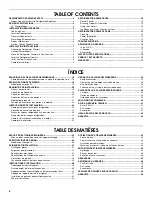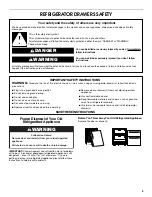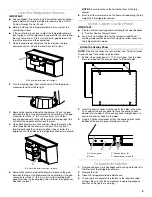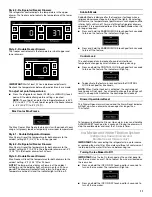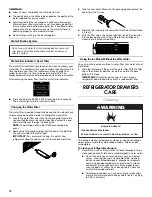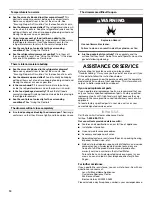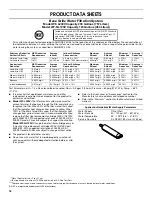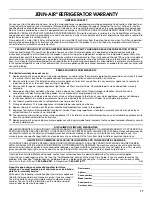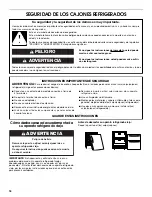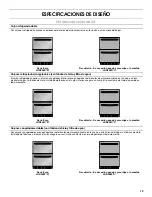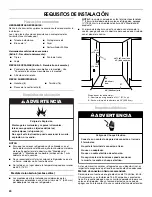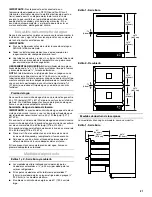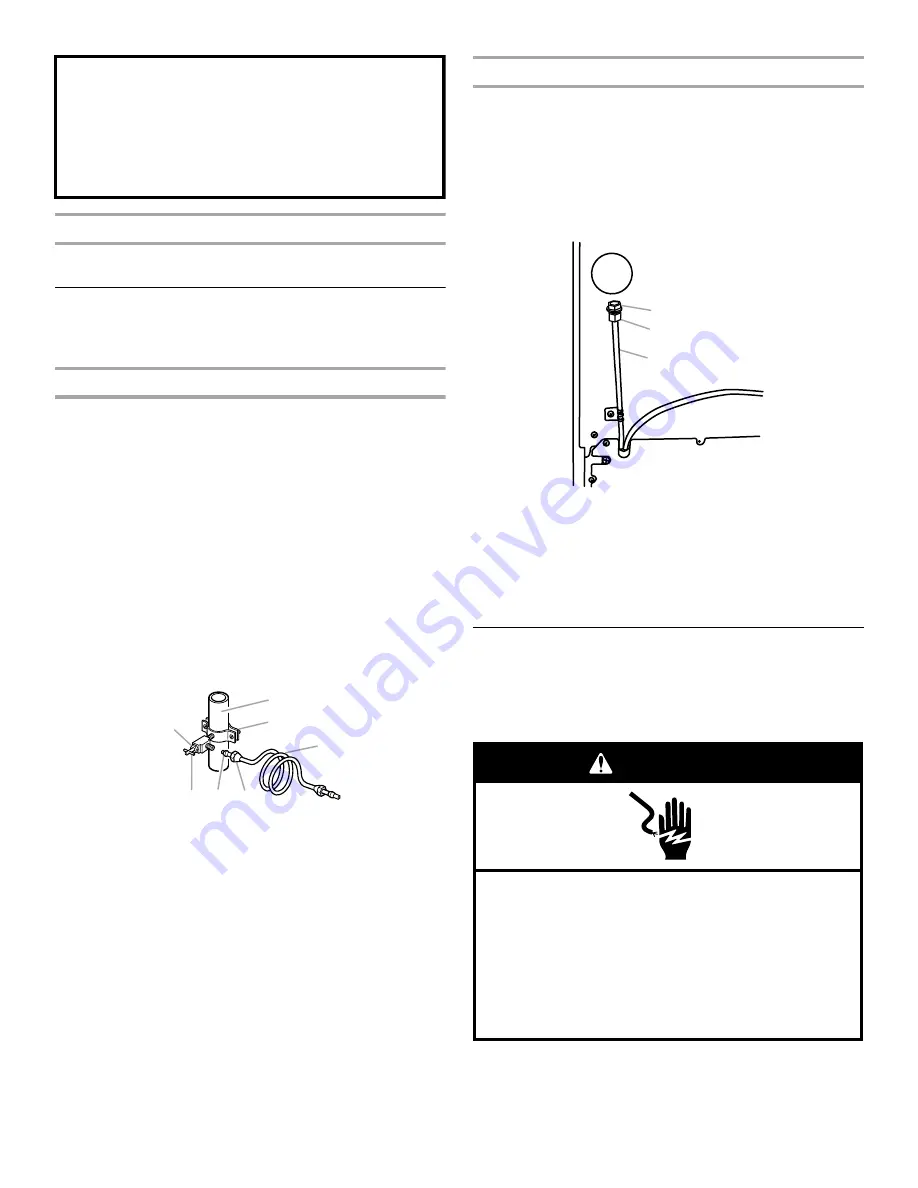
8
Clean Before Using
After you remove all of the package materials, clean the inside of
your refrigerator drawers before using them. See “Cleaning.”
Connect Water Supply
(Refrigerator/Freezer Drawers and
Double Freezer Drawers only)
Connect to Water Line
1. Unplug refrigerator or disconnect power.
2. Turn OFF main water supply. Turn ON nearest faucet long
enough to clear line of water.
3. Locate a ½" to 1
¹⁄₄
" (1.25 cm to 3.18 cm) vertical cold water
pipe near the refrigerator.
IMPORTANT:
■
Make sure it is a cold water pipe.
■
Horizontal pipe will work, but drill on the top side of the
pipe, not the bottom. This will help keep water away from
the drill and normal sediment from collecting in the valve.
4. Determine the length of copper tubing you need. Measure
from the connection on the lower left rear of refrigerator to the
water pipe. Add 7 ft (2.1 m) to allow for cleaning. Use
¹⁄₄
"
(6.35 mm) O.D. (outside diameter) copper tubing. Be sure both
ends of copper tubing are cut square.
5. Using a cordless drill, drill a
¹⁄₄
" hole in the cold water pipe you
have selected.
6. Fasten the shutoff valve to the cold water pipe with the pipe
clamp. Be sure the outlet end is solidly in the
¹⁄₄
" drilled hole in
the water pipe and that the washer is under the pipe clamp.
Tighten the packing nut. Tighten the pipe clamp screws slowly
and evenly so washer makes a watertight seal. Do not
overtighten or you may crush the copper tubing.
7. Slip the compression sleeve and compression nut on the
copper tubing as shown. Insert the end of the tubing into the
outlet end squarely as far as it will go. Screw compression nut
onto outlet end with adjustable wrench. Do not overtighten.
8. Place the free end of the tubing in a container or sink, and turn
ON the main water supply. Flush the tubing until water is clear.
Turn OFF the shutoff valve on the water pipe. Coil the copper
tubing.
Connect to Refrigerator
1. Attach the copper tube to the valve inlet using a compression
nut and sleeve as shown. Tighten the compression nut. Do not
overtighten. Use the tube clamp on the back of the refrigerator
to secure the tubing to the refrigerator as shown. This will help
avoid damage to the tubing when the refrigerator is pushed
back against the wall.
2. Turn shutoff valve ON.
3. Check for leaks. Tighten any connections (including
connections at the valve) or nuts that leak.
4. The ice maker is equipped with a built-in water strainer. If your
water conditions require a second water strainer, install it in
the
¹⁄₄
" (6.35 mm) water line at either tube connection. Obtain
a water strainer from your nearest appliance dealer.
5. Plug in refrigerator or reconnect power.
Move the Refrigerator Drawers to
Final Location
1. Place top of cardboard carton or plywood under the
appliance. Remove dolly.
2. Do not remove film or cover.
3. Plug into a grounded 3 prong outlet.
4. Move the refrigerator drawers straight back and evenly in front
of the opening.
A. Cold water pipe
B. Pipe clamp
C. Copper tubing
D. Compression nut
E. Compression sleeve
F. Shutoff valve
G. Packing nut
When Moving Your Refrigerator Drawers:
Your refrigerator drawers are heavy. When moving the
appliance for service, be sure to cover the floor with
cardboard or hardboard to avoid floor damage. Always pull
the appliance straight out when moving it. Do not wiggle or
“walk” the appliance when trying to move it, as floor
damage could occur.
A
B
C
D
E
F
G
A. Plug
B. Compression nut
C. Pex tubing
A
B
C
Electrical Shock Hazard
Plug into a grounded 3 prong outlet.
Do not remove ground prong.
Do not use an adapter.
Do not use an extension cord.
Failure to follow these instructions can result in death,
fire, or electrical shock.
WARNING


